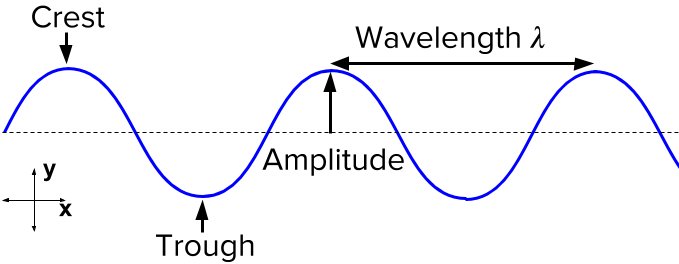Mahi Tuatahi 🔗
- Collect your exercise books and a title
- Sit in your seating plan
- Glue in your title on a brand new page
- Colour in each letter a different colour
- Write down the date and today’s learning outcome:
- Today I will be able to name the main source of radiation and describe how it transfers energy.
Ngā Whāinga Ako 🔗
- I can name the main source of radiation and describe how it transfers energy
Electromagnetic (EM) Radiation? 🔗
- A type of radiant energy which can move through the vacuum of space
- Comes in many forms like visible light and heat energy
- Travels fast enough to go around Earth 8 times a second (300,000km per hour)
- The main source is the Sun!

- Cut out the sheet you have been handed.
- Use this image to help your organise the types of radiation!
Gamma Radiation 🔗
- Highest energy
- Come from stars in space
- Can be dangerous, but can be used to kill cancer

X-Rays 🔗
- Can be used to image bones
- Also produced by stars in space
- Dangerous in high amounts

Ultra-violet Radiation 🔗
- Can cause skinburn and cancer
- Our ozone layer protects us from it

Visible Light 🔗
- The part that we see with our eyes!

Infrared Radiaton 🔗
- Feels like heat!
- Your remote uses it to communicate with the TV

Microwaves 🔗
- Used to heat food
- Also used by satellites

Radio Waves 🔗
- Used for long range communication like radios

Light and Surfaces 🔗
Make four columns in your book with room for a title and diagram in teach!
Reflection 🔗
When light bounces off a surface. You see objects by seeing their reflected light.

Refraction 🔗
When light goes from one material to another e.g. from air to water, it can bend and change direction.

Transmission 🔗
Light can pass through some transparent materials like glass.

Absorption 🔗
E.g. an apple absorbs all colours of light except red, which is reflected into your eyes!

Whakamātau: Magnifying Glasses 🔗
- Collect your face mask from the front
- Cut out the face and spend 5-10 minutes decorating it
- Open the whakamātau document on Google Classroom and read through the background and method

Akoranga 2 Mahi Tuatahi 🔗
- Draw below, a diagram of what your magnifying glass looked like while you were trying to ignite your piece of paper. Indicate areas of relative brightness/darkness.
- Try and explain what is happening to the light to cause your diagram above.
- Why does the paper catch fire?
- Do any particular colours catch fire better than others?
Akoranga 2 Ngā Whāinga Ako 🔗
- I can recall the order and use of each type of electromagnetic radiation/hihi autōhiko
- I can name the seven colours of the visible spectrum and describe how to produce a spectrum by dispersion
Electromagnetic (EM) Radiation / Hihi Autōhiko 🔗
- A type of radiant energy which can move through a vacuum (korekore).
- Comes in many forms like visible light and heat energy
- Is a big spectrum (tūāwhiorangi)!

Task 🔗
Write down the order of the different electromagnetic waves (ngaru autōhiko) (least energy to most energy). Hint: ROYGBIV!

Visible Light / Aho Kitea 🔗
- Visible light is only a very small part of the spectrum
- Is between $380$ to $700 nanometers$
- Purple/violet has the most energy (shortest wavelength)
- Red has the least energy (longest wavelength)

Task: Write the order of the visible spectrum colours

What is Wavelength / Roa o te Ngaru? 🔗
- The distance between consecutive peaks or troughs on a wave!
- Red light has a wavelength of $700nm$ which is $0.0000007m$!

- Radio waves can have a wavelength of up to $10,000km$!
- Gamma waves can have a wavelength of $0.00000000001m$!

Task 🔗
Revise the flashcards on the electromagnetic spectrum (tūāwhiorangi autōhiko) on Quizlet!
https://quizlet.com/nz/526266053/electromagnetic-spectrum-flash-cards/